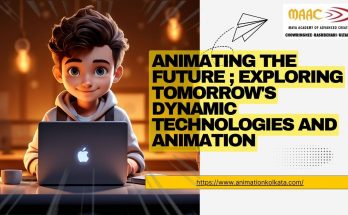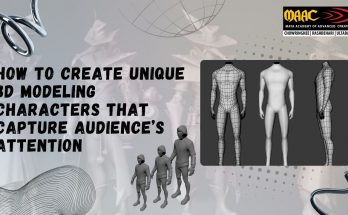Animation is an excellent method to associate with the audience in a fun and new manner.
In recent years animation has been utilized in many fields to just increase knowledge, marketing, advertisement and age group from infants to adults.
The present communication expounds the systematic review on the influence created by animation on the viewer’s visual attention.
For this research a database such as google scholar, science director Taylor Francis and IEEE Xplore were pursued for Publication on the impact of animation on viewer’s attention from January 2015 to December 2021.
The search results showcased 175 titles with 114 full articles out of which 35 were related to viewers’ visual attention towards animation.
The animation has influenced the viewer’s visual attention through the amalgamation of different stimuli and highly organized presentation.
The animation has influenced the viewers’ visuals in gaining greater conceptual understanding, thereby facilitating their cognitive response.
The animation was helpful in enhancing learning skill, food marketing, and teaching strategy.
Furthermore the drawbacks and future recommendation of studies were extended.
In addition challenges and open issues faced during studies were discussed.
Finally the priority areas in animation for promising visual future direction to visualize large pool data, provide pool data, provide smart communication and design 3d modelling structures were highlighted.
Emotional response to animation

Animation is a comprehensive introduction to an animated film from cartoon to computer animation.
In the common man’s term it may be described as a state of being full of life In layman’s terms it may be described as a condition as being full of life.
It brings the life of inanimate objects to moving objects thereby attracting the modern world with its features.
In other words it is a form of pictorial presentation. It has become an essential form of presenting multimedia materials for learners to understand.
One of the most notable impacts of animation is the emotional response it may evoke to viewers.
Whether its joy, sadness, fear , excitement animated media has the ability to create strong emotion and engage us to a deeper level.
Animation is a form of storytelling and stories are a crucial part of human experience.
The earliest days of human history people have used stories to make sense of the world around them, pass on knowledge and wisdom and thus it might get connected with others.
Animation takes storytelling to a new level using visuals and sound to create rich and immersive experiences that may transport one to new places and introduce us to new characters.
Beyond storytelling itself, animation uses a wide range of techniques to raise emotional responses.
Animators may use color and lighting to create mood and atmosphere or use music and sound effects to just heighten tension or excitement.

Characters may be designed with specific facial design and body language that may convey emotion and it helps one to connect into a deeper level.
Nostalgia and emotional connection- Another important factor of the emotional impact of animation is nostalgia.
Many of us grew up watching classical animated films like Beauty and the Beast.
These movies hold a special Space in our hearts.
When we visit these films as adults we just go through a lot of emotion and memories that may be very powerful.
The emotional connection to animated media may impact our behaviour in various ways.
It may influence movies we prefer to watch or the products we prefer to buy.
One may seek out animated media ways to connect to others who may share our love for these kinds of stories.
Physiological principle in animation– In The emotional impact of animation there are a number of physiological principles and theories at play in the way animated media is created and received.
As for example, social learning theory suggests that we learn by observing and by just imitating others.
Animated media may just serve as a powerful element for teaching these behaviours.
Children in particular may learn social skills and values from animated characters and storylines.
Cognitive dissonance is an important factor that may be observed in animation.
This theory suggests that when we encounter information that conflicts with our existing belief or values, this contradicts with our existing beliefs or values we experience a sense of discomfort or dissonance.
Animated media may challenge our assumptions and beliefs forcing us to reconsider our perspectives and potentiality leading to personal growth and development.
Visual elements and perception- One of the best aspects of animation is the way it uses elements to impart message and emotions.
From shape and character to the color palette of the film itself of animated media.
For example, characters with exaggerated facial features or body proportions may be more memorable and engaging to viewers.
Similarly the use of color may be used to convey mood and emotion.
Bright colors may create a sense of joy and excitement while dark colors may create a more sober or serious tone.

Mental health and illness in animation- The way mental health and illness are portrayed in animated media one may have an impact on our attitudes and behaviour toward these issues.
Historically mental illness has been stigmatized and misunderstood and animated media has itself played a major role in posing a challenge to these negative attitudes.
In the Pixar film Inside out the main characters are personified as characters that help her to accept the challenges of adolescence.
The portrayal of emotions as complex and multifaceted may help children and adults alike to understand their emotional experience and thus reduce the stigma that surrounds mental health issues.
Animation and cultural values- Animated media may have a major impact on one’s cultural values and beliefs.
Stories have been used as a way to transmit cultural knowledge and values from one generation to the next generation.
For example Disney films often promote themes of friendship, loyalty, and perseverance, while Studio Ghibli films explore themes of environmentalism and respect for nature.
The psychology of animation is a rich and complex topic that touches a range of emotion and behaviour.
One may appreciate the power of this medium and use it to promote positive change in ourselves.





